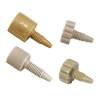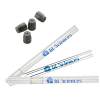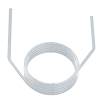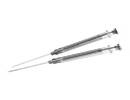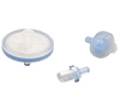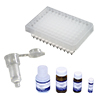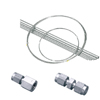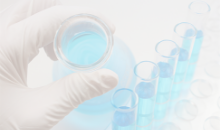7. How to Improve the Robustness of Your Methods
Even if you manage to fix the analytical conditions, sometimes you cannot obtain the same result again. In this section, we’ll give you some tips to improve the robustness of your methods.
7-1. Analysis with an Unused Column
Some strongly adsorbed compounds remain in the column even after thorough wash, and they have a huge influence on the following analysis. Figure 7-1 shows secondary adsorption, which is a representative of these effects. The adsorbed compounds worsen the peak shape in this case. On the other hand, secondary adsorption separates analytes which are not separated by nature in other cases. If the effects of adsorbed compounds are not taken into account in the established method, the result might not be repeatable anymore when the column is replaced. In order to avoid this, we recommend repeatability tests with an unused column. It is not often the case with recent columns, but the elution pattern used to slightly vary from lot to lot. This also lowers the repeatability of your method. Therefore, it is desirable to confirm the repeatability of your method with some columns from different lots.

7-2. Mobile Phase Preparation by Different Operators
A slight change in the mobile phase composition can dramatically have a huge impact on the retention times or the retention patterns, depending on the analytes or the conditions. Thus, it is recommended to confirm the method robustness for the target compound by mobile phases prepared by different operators. The slight change in the mobile phase composition is crucial especially when the mobile phase has a weak pH-buffering capacity or one of the mobile phase component has an extremely low concentration. In this case, it is desirable to change the pH to have a strong pH-buffering capacity or prepare the mobile phase based on the weight ratio, which excludes the effect of density change by temperature.


